My lawn always looks kind of crummy early in the season. This year is no different. I was thinking maybe it even looked worse than usual. My front yard looks thin. The backyard looks thin with many bare patches. The backyard I’m thinking is worse because I’ve had so much clover growing back there, which may be crowding out the grass. The other possibility is that we may have a grub issue. We get a decent amount of skunks in our neighborhood and they like to dig up the yards looking for grubs. So, I’ve decided to make it my project to see how much I can improve the lawn.
Timeline:
4/22/22 – landscapers scalped the lawn and aerated
4/23/22- I spread Scotts Thickr Lawn and Scotts EZ Seed, only to have everything wash away during heavy rains the next day
5/7/22 – Tenacity (mesotrione)
5/21/22 – Tenacity again, manual aerate a few spots, variety of grass seeds throughout yard (kentucky bluegrass, perennial ryegrass, turf type tall fescue, and fine fescue), fertilized top soil as a covering for the seeds in bigger spots, straw mat over biggest bare spot
7/1/22 – Ortho Weed B Gon Chickweed, Clover, and Oxalis Killer (triclopyr, triethylamine salt 8.0%) and Grub-Ex
8/13/22 – Applied Scotts Thickr Lawn everywhere, Scotts Sun and Shade to bare spots and overseed everywheree else, fertilized top soil to bare spots, and more Tenacity
Here’s some before photos to give you an idea of what I’m dealing with. 
Close-up of a section of the front yard 4/23/2022



4/23/22 details
1. Overseeded and fertilized the front and backyard. Scotts Turf Builder Thick’R Lawn Sun & Shade – 3 in 1 Lawn Fertilizer, Seed, & Soil Improver. They had this large bag available at Costco. The price may actually be better on Amazon (currently $54 for a 40 lb bag good for 4000 square feet), but I wanted to get an application down, rather than wait for the Amazon delivery. The specific seed mix included is 3.07% Alley Perennial Ryegrass, 3.03% Process Perennial Ryegrass, 2.42% Bolster Chewings Fescue, 2.38% Boreal Creeping Red Fescue, 0.62% Jump Start Kentucky Bluegrass, 0.61% Courtyard Kentucky Bluegrass.
2. Next, for the bad bare patches in the backyard, I used a combined product that also includes mulch to hopefully help get the grass to germinate in bare areas. The product is called Scotts EZ Seed Patch and Repair Sun and Shade. $65 for only 445 square feet of coverage. It was a mix of bluegrass, ryegrass, and fescue, but I threw away the bag before getting the specifics.
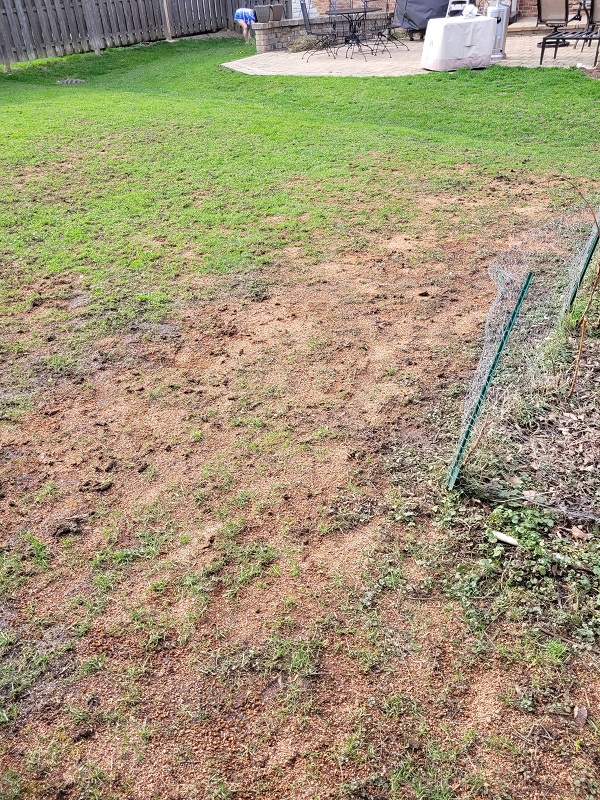
<update 4/24/2022>
Of course, we got torrential downpours washing away everything I put down. Watched YouTube videos, did some more research, and reconsidered the plans for the summer.
<Update 5/7/2022>
A lot of the seed and fertilizer probably got washed away in the heavy rains. And it’s been pretty much daily rain for the past two weeks, as well as cool weather around 50 most days. Today was the first day without rain and we aren’t expecting rain for the next week, along with higher temperatures in the upper 70’s and 80’s.
To add to the headaches, I’ve got tons of clover showing up in my backyard. I’ve taken a step back and realize that for now I need to get better weed control. I had purchased some Weed-B-Gon for Clover, but after doing some more reading, I came across a newer weed killer for cool weather lawns called “Tenacity”, which has the generic chemical mesotrione. The unique feature of this weed killer is that in addition to being effective against broadleaf weeds, it is also effective against crabgrass, and clovers. But one of the best features of Tenacity is that it will not harm grass seed, essentially allowing you to put down weed killer and add seed at the same time. It does seem like it may be harmful to young grass, but even that isn’t entirely clear to me.
Tenacity is a bit more of a process to apply. I purchased a pump sprayer, the Tenacity, a surfactant, and a blue dye. I mixed them in the sprayer along with 2 gallons of water. The 2 gallons should be enough to cover about 2000 square feet. I was able to cover about 3/4 of my backyard with the 2 gallons. I debated mixing up another gallon to treat the rest of the back yard and spot treat the front yard. I decided instead to see how things look in two weeks, reapply to any remaining weeds where I’ve already treated and also treat the areas I haven’t yet treated. I’ll also do some overseeding at that point. I will plan to continue doing spot weed treatments this summer to try to get the clover under better control, as I think it has been crowding out the grass. Assuming I can get rid of the clover, I’ll do more major overseeding in the late summer / fall, which is the best time to do that in my area.
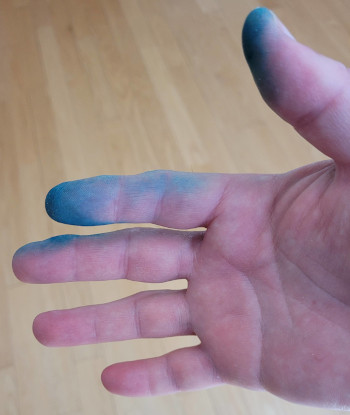
Some advice – the blue dye gets everywhere except where you want it to go. When I first inserted the syringe into the bottle, I didn’t plan for the displacement of the dye – and it spilled out of the bottle onto our patio. And even though I was wearing gardening gloves, the dye leaks through and stained my hands. I really should have worn better gloves to protect my hands from the Tenacity, but fortunately, I don’t think I got any weed killer on my hands – just the raw dye.
More updates to come.
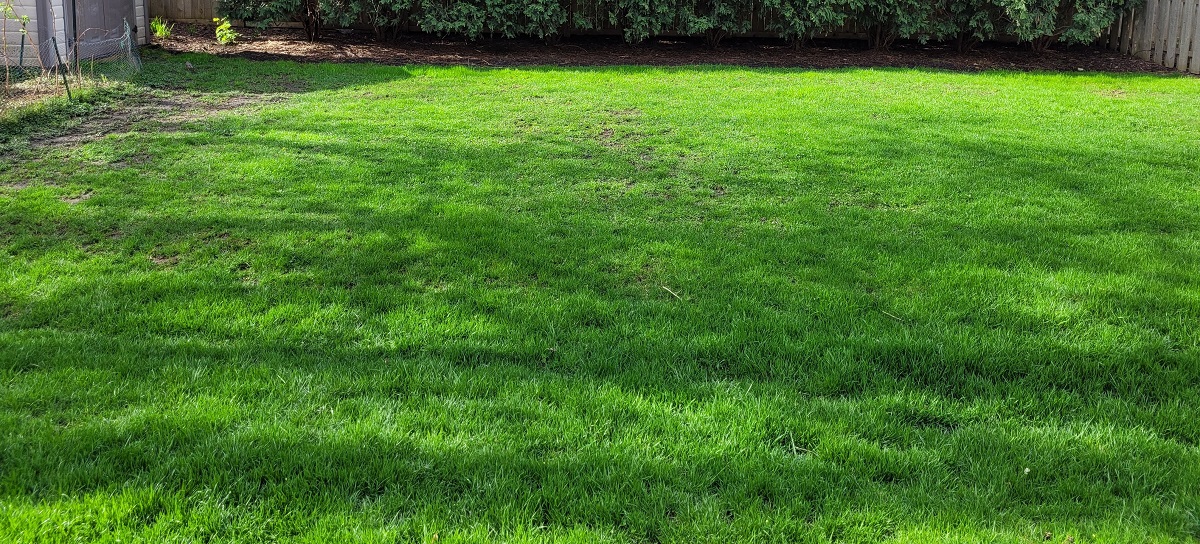

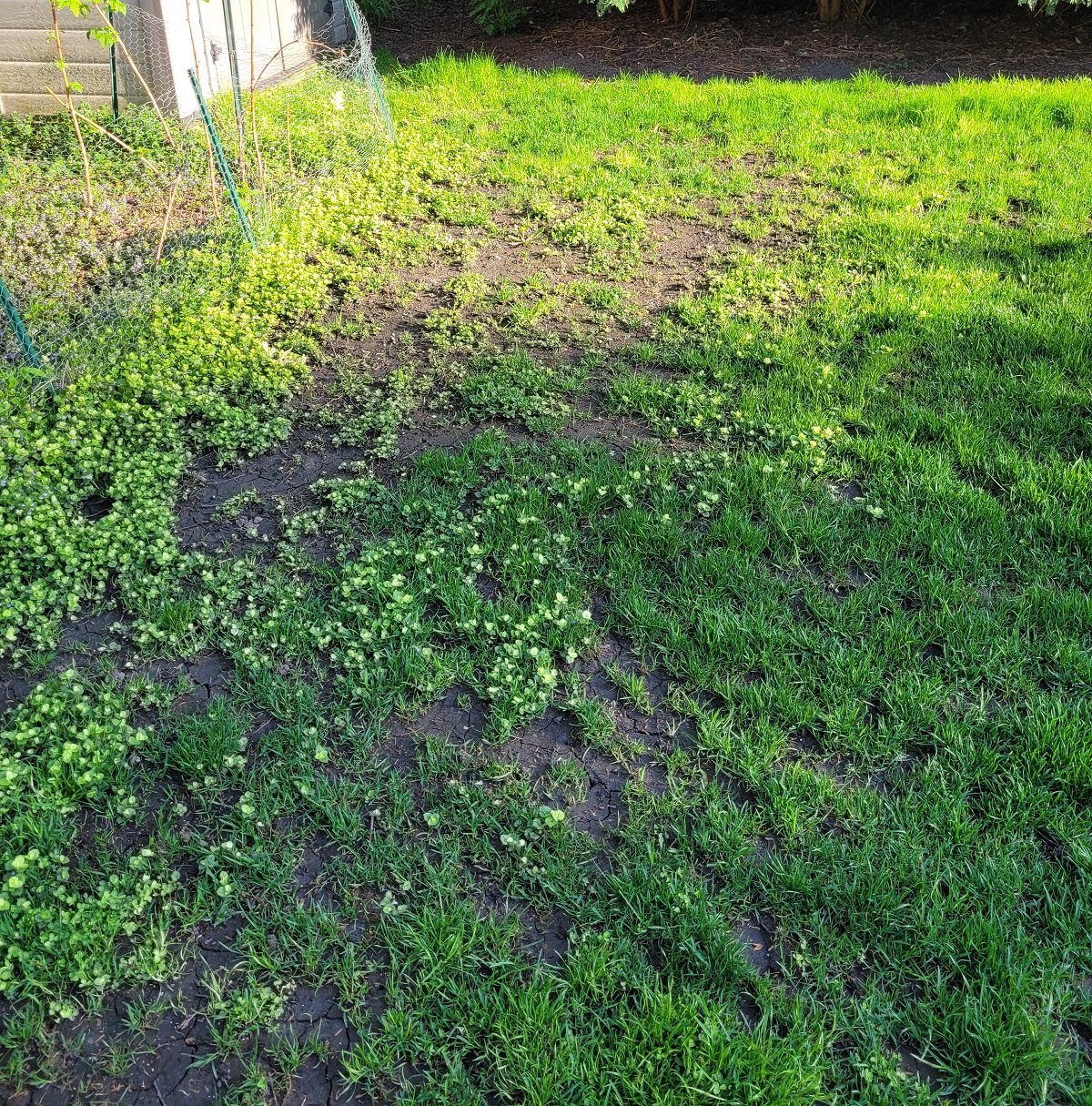




I may as well detail the seed added here. It’s a hodgepodge but I figured I’d get a sense of the different seeds, at different price points.
First, the very back of the yard, near the shed opening (behind the raspberry patch) is a high traffic area that probably won’t do great. It has some shade from the trees but gets a decent amount of sun overall. I had some Pennington Smart Seed for a few years ago that I spread over that area pretty thick. The bag says it is a drought tolerant mix, requires 30% less water, and includes “Tetraploid Ryegrass” to ensure a lush green lawn. The seed label describes that mix as:
22.10% Rebel XLR Tall Fescue
20.14% Pennington ATF1258 Tall Fescue
20.10% Penn RX4 Tall Fescue
9.82% Trek Perennial Ryegrass
7.93% Ridgeline Kentucky Bluegrass
Inert matter includes 18% fertilizer
It’s an interesting mix as it includes the main varieties of cold season grass seeds. I know Kentucky Bluegrass seeds are smaller, so even though it is a smaller percentage, that seems to be a pretty typical amount. It is clearly a TTTF (Turf Type Tall Fescue) dominant mix though which is supposed to be good for higher traffic areas. It is a few years old, so we’ll see if it still germinates. The seed didn’t look like it had any coating on it. I also didn’t really cover the seed where I laid it down. I figured I may as well use it and now seemed as good of a time as any.
As for the main area next to the raspberry patch that is thin / dead / compacted. I assume a big part of that being dead is because we tend to walk along that area to pick raspberries. So this is also a high traffic area that gets almost full sun. I had picked up some relatively cheap grass seed from Home Depot by Vigoro, described as a Sun and Shade mix. The 7lb bag was around $20. The seed label lists:
17.00% Penn RK4 Tall Fescue
17.00% Pennington ATF1258 Tall Fescue
8.25% Penn ASC295 Red Fescue
5.00% Argyle Kentucky Bluegrass
It also has 50% inert matter as seed coating, so I guess that means technically it is only about 3.5 lbs of grass seed. But this is another TTTF but it does not include the Pennington Rebel, which I think is supposed to be one of their better seeds, nor does it include any perennial ryegrass. I’m actually okay without the ryegrass in this area, as I’ve heard it doesn’t do so well with traffic. This seed has a coating that is green in color, which was interesting. I put it on pretty thick in that area and then covered it with a very small amount of fertilized top soil, and then smoothed it out with the back of a rake. Interestingly, smoothing it out made the seeds more visible as opposed to being just under the surface.
Costco had a 15lb bag of Scotts Sun and Shade mix for $45. I figured I may as well get it to have plenty of extra seed for filling in any other bare patches and future bare spots. This seed has a 4-in-1 coating (as opposed to the Vigoro triple coating – more is better right?). This seed label shows:
8.78% Apex Perennial Ryegrass
7.32% Portfolio Perennial Ryegrass
6.74% Wendy Jean Creeping Red Fescue
6.25% Oracle Creeping Red Fescue
5.55% Gaelic Kentucky Bluegrass
5.28% Abbey Kentucky Bluegrass
4.29% Selway Kentucky Bluegrass
3.78% Momentum Chewings Fescue
For other ingredients, it includes 50% Water Smart Plus Fertilizer Coating
So this is a fairly different variety from the other two. It does not include any tall fescue. It seems to be closer to an even mix of perennial ryegrass, creeping red fescue, and kentucky bluegrass. I may look into it some more, but I think the creeping red fescue does better in shady areas, and there isn’t a lot of shade in my backyard. The perennial ryegrass is often described as a nice looking, dark green, thin blade of grass – that people seem to really like. I don’t think it is as durable as the other cool season grasses though. And then kentucky bluegrass is often considered the most desirable of the cool season grasses because it “heals itself” – filling in bare spots over time. The biggest downside of kentucky bluegrass is that it takes a long time to germinate. And during that time, weeds and nearby grasses can crowd it out.
I’m thinking I may be starting to overseed and just fill in barespots every fall going forward, so I’m not as concerned about having kbg (kentucky bluegrass). I have a feeling that it’s been in my yard already, but I still have been getting plenty of thin spots or even bare spots. If I have to seed bare spots anyway, I’d rather have something start filling in after a week as opposed to 2-3 weeks.
So I did use the Scotts Sun and Shade mix as a somewhat light overseed in the backyard, and applied it heavily to bare patches in the middle of the backyard as well as areas that were bare near my patio. I did use it in one higher traffic area near my fence gate, and I suspect it won’t tolerate the traffic well, but we’ll see.
After laying down all of the seed, covering a few of the areas with fertilized topsoil, the next day my wife got upset that there were some birds feasting in the backyard. I said that I don’t think birds eat enough of the seed to really make a difference. And I’ve read that some of the coated seeds essentially negate any flavor for birds so they won’t keep eating it, but she didn’t like it and wanted to know if I could put straw down on the seeds, as she’s seen other people do.
I’m not sure how helpful it is, but I figured it wouldn’t hurt – aside from the cost. So I went to a local Ace Hardware and unfortunately, I didn’t see the straw they supposedly had in stock that gets tacky when wet, and is a bit cheaper, but I saw the “germination blanket” style seed covering. It is basically bird netting with some straw attached to it. So here’s how the lawn looked after placing down the straw:

Of all the work I put in – Tenacity, manual aerating, seeding, covering with fertilizer – this straw seemed to be the one thing that made my wife the happiest.
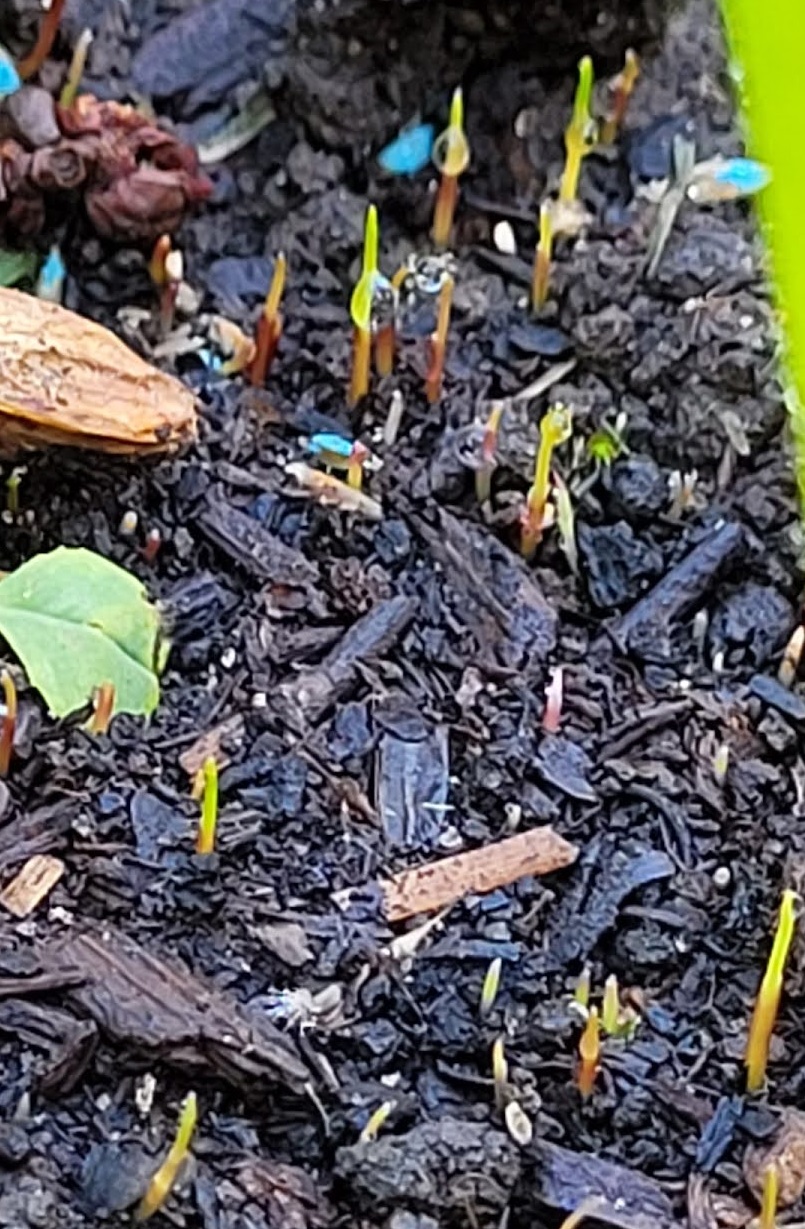
On 5/28/22, I am starting to see some grass sprouting in full sun area of backyard, where I used the blue Scotts Sun and Shade mix. This is a mix of perennial ryegrass, creeping red fescue, chewings fescue, and kentucky bluegrass. I’m sure it wouldn’t be the kentucky bluegrass this fast, but I’m not sure how long each of the others usually take. This is only in one area of the lawn that I am seeing some germination happening. Hopefully the rest of the lawn patches will start showing some growth soon.
I don’t really notice the creeping charlie looking white yet, which is a little disappointing compared to the first application timing, but we’ll see how that looks in another week or so.
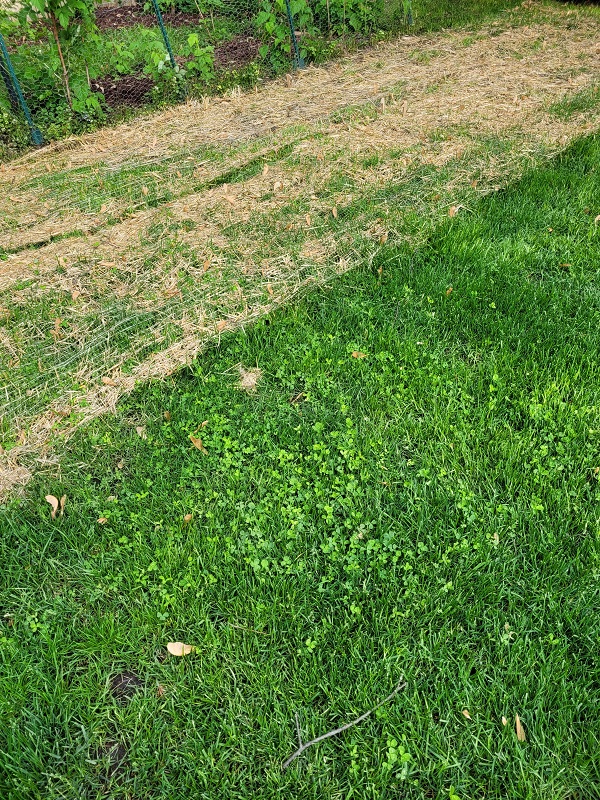
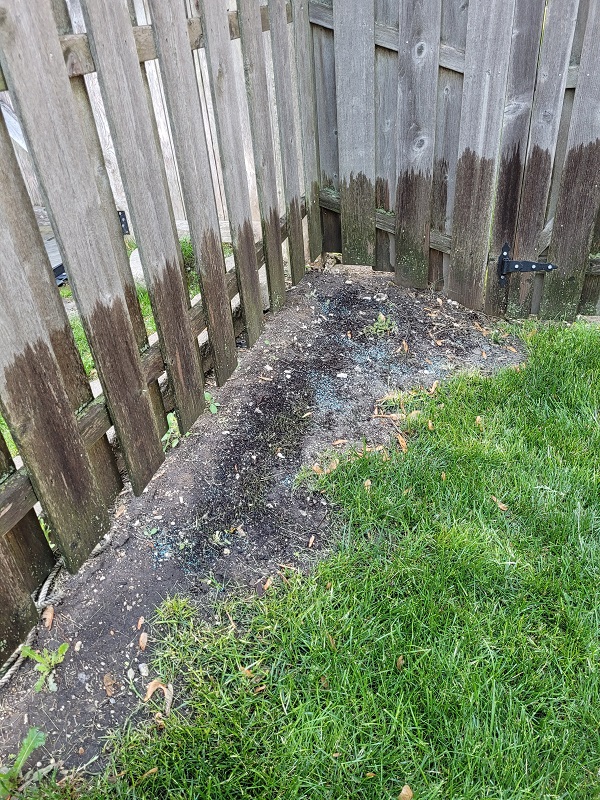
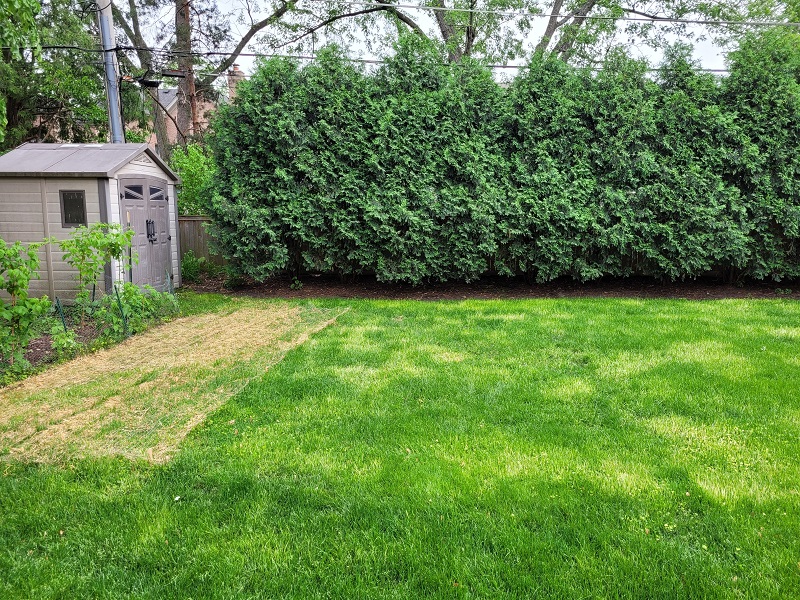
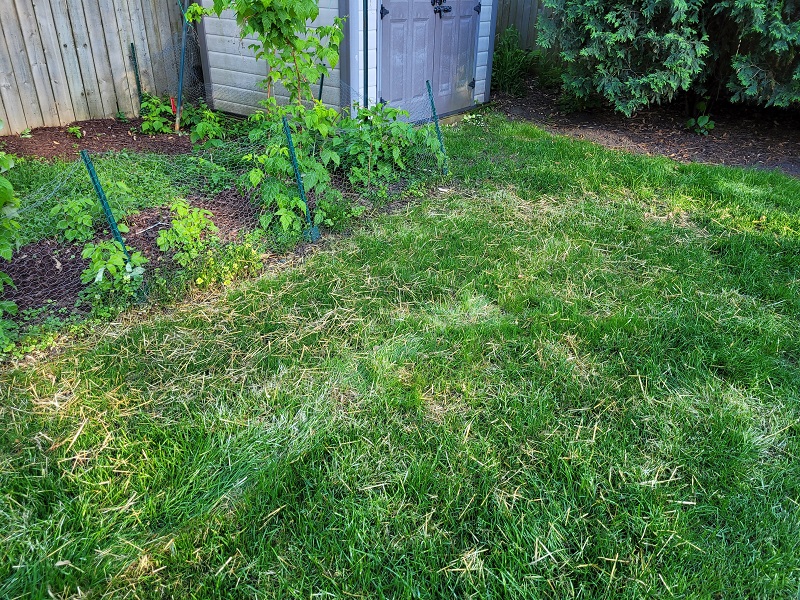
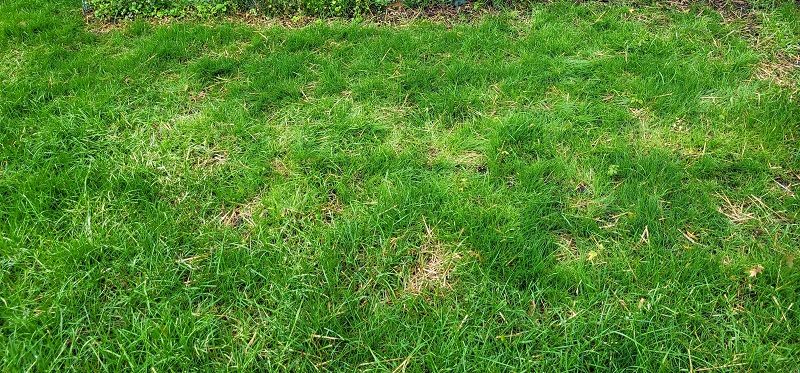
6/8/22 – a better view of the fresh grass that mostly didn’t survive
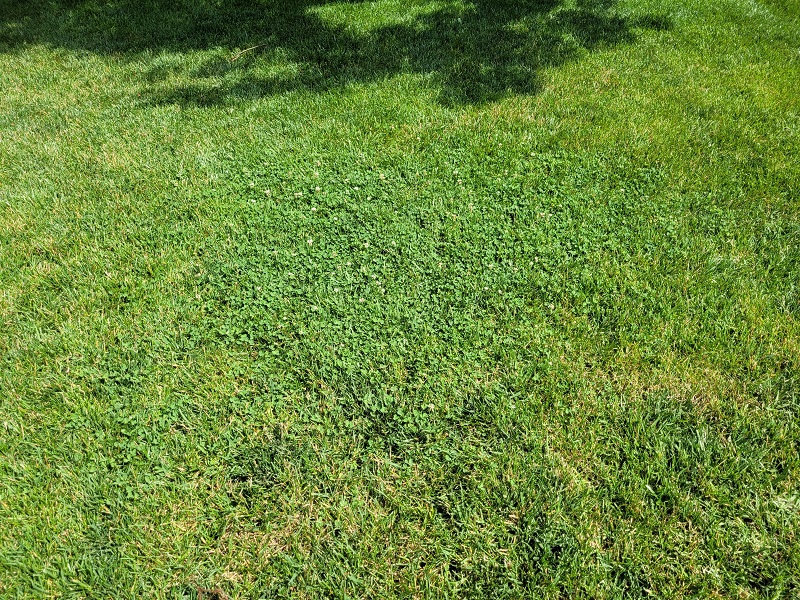
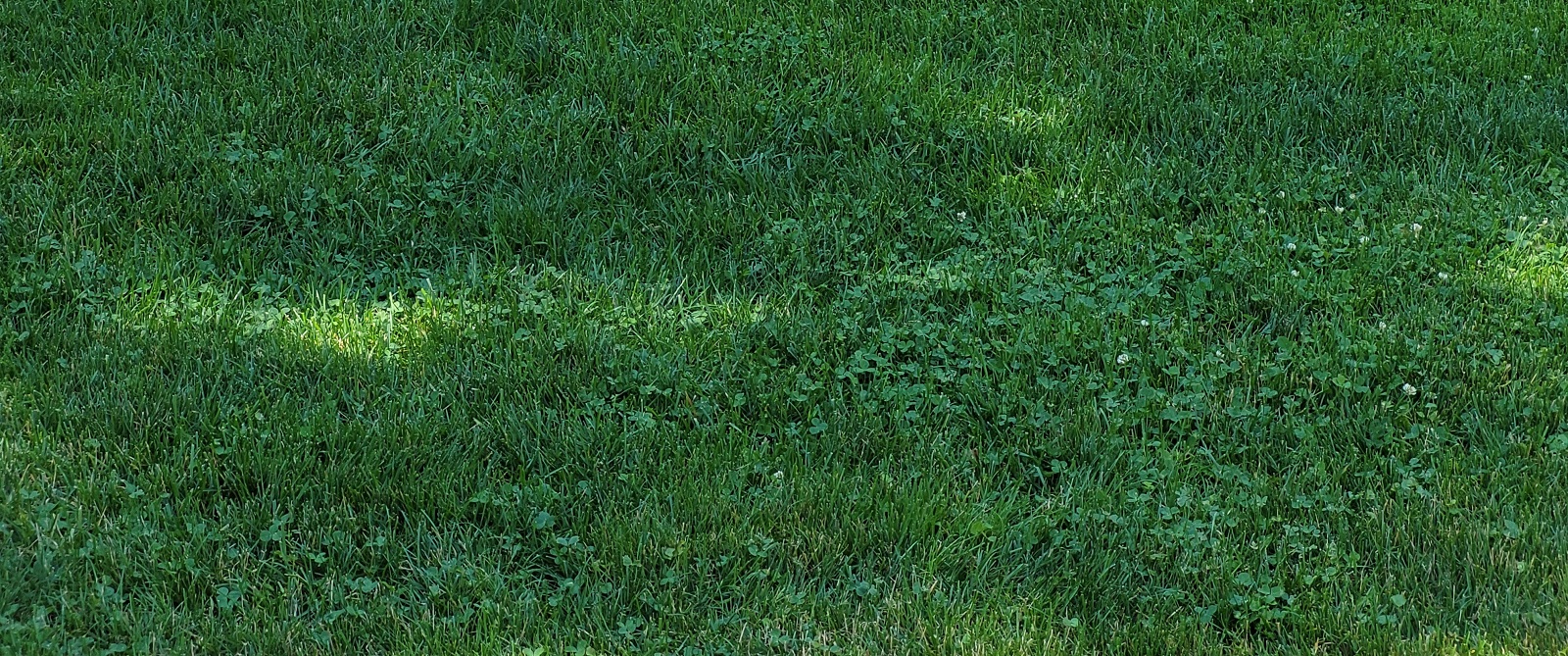
Clover and Creeping Charlie are tough to kill. Tenacity did do a decent job of controlling it though. There was a lot more than these relatively small patches. Apparently the best time to try to kill them is in the late fall, with a weed killer containing triclopyr. I was thinking I would likely just wait until late summer to overseed and re-seed the remaining bare patches and then apply triclopyr in the late fall to kill off any remaining clover and creeping charlie. I then saw that I was getting a large patch of white clover in my front yard, as well as some patches in my backyard. I had heard that if I don’t try to kill it before seeding, I’ll wind up with bare patches where the clover was, once I do kill it off. I had some triclopyr already, so I went ahead and applied it, mixed with water, from my pump sprayer. The form of triclopyr I used was the Ortho Weed B Gon for clover, chickweed, and oxalis. It is around $13 on Amazon and plenty to cover 3200 square feet). They do make a bottle that directly attaches to a hose, but I had a hose end sprayer as well as the pump sprayer to use. I decided to use the pump sprayer to have a little more control to avoid getting it near my garden areas.
Even applying it in July, it did a great job getting rid of the white clover and remaining creeping charlie I sprayed.
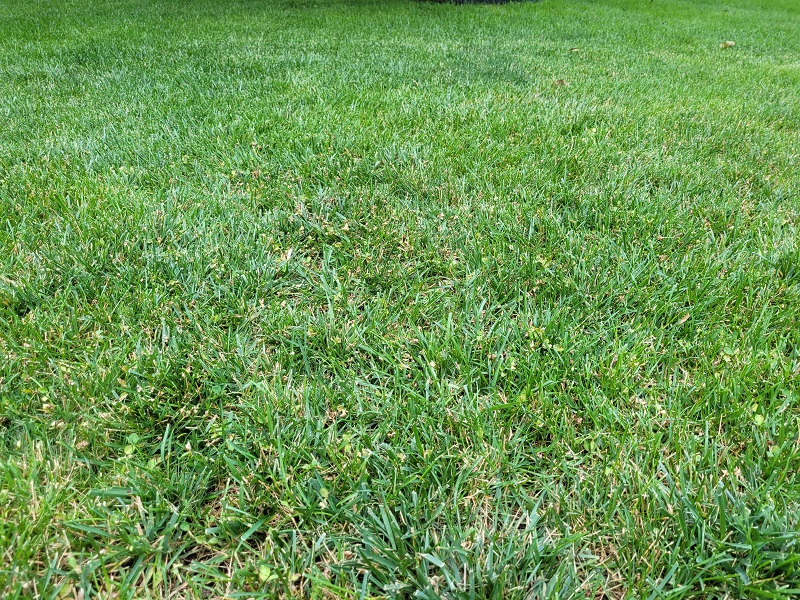
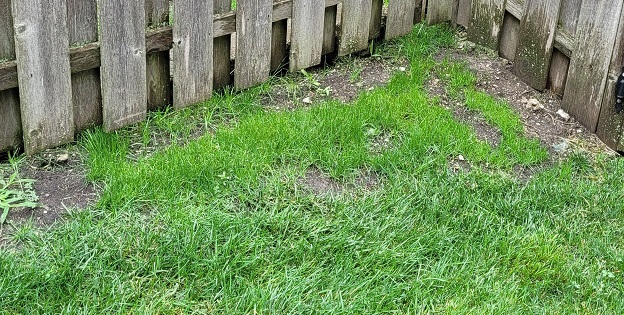
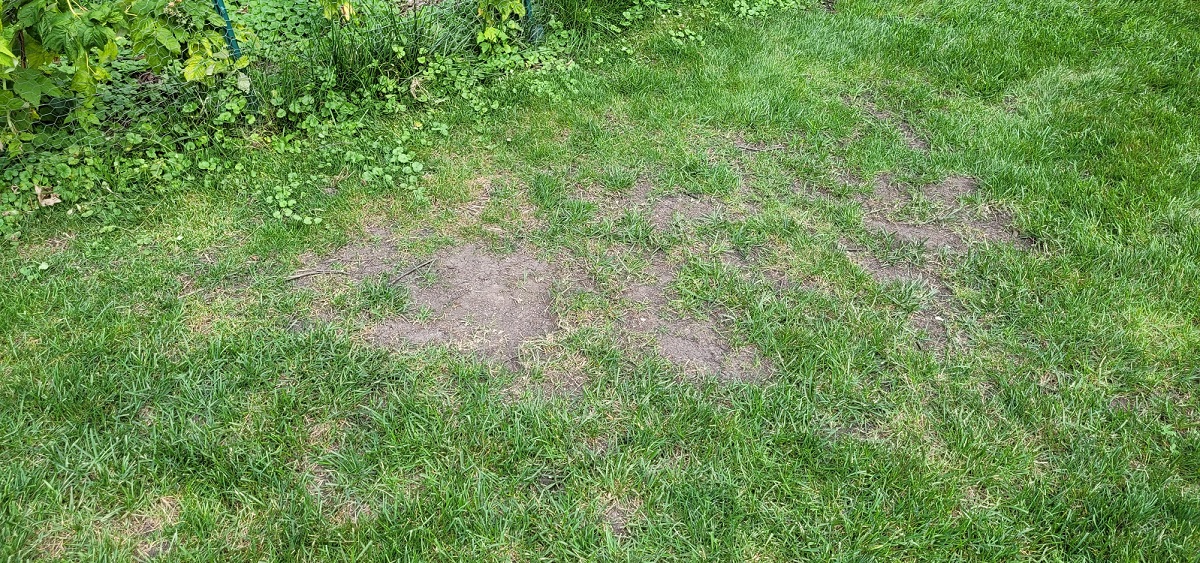
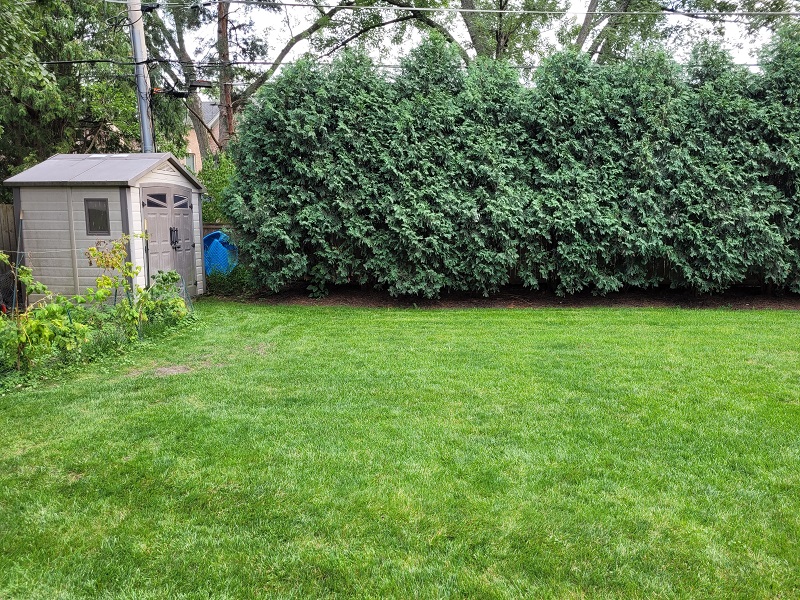
Overall, I’m fairly pleased with where the lawn is going into late summer. It seems we are going to have cooler weather over the next 10 days, so I decided to do my “fall” overseeding on 8/13/22. I feel like the clover and creeping charlie are mostly gone. The bare thin spots in the lawn have mostly filled in, except the one large area near my raspberries. I went ahead and used the rest of the Scotts ThickR Lawn (fertilizer plus seed) over my entire lawn. I also put Scotts Sun and Shade seed mix in the bare patches, covered with a small amount of top soil pre-mixed with fertilizer. I then decided to put down an application of Tenacity to kill any remaining weeds and control them. Assuming I still have some, I will likely do an application of triclopyr in the fall to do my best to kill it off.